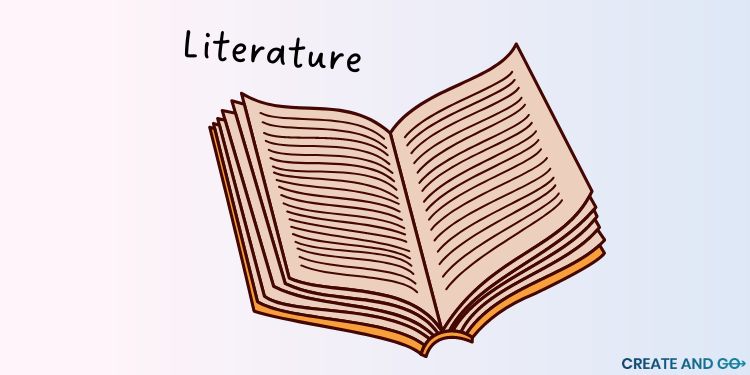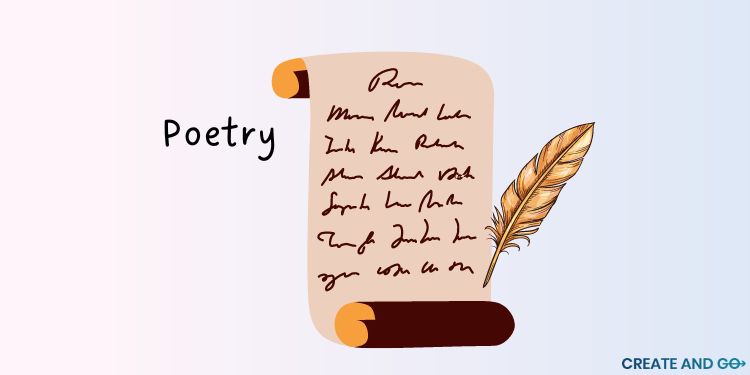Chiasmus, a rhetorical device that thrives on the art of reversing structures, lends an intriguing depth to language, driving home points with a unique twist.
With roots dating back to ancient Greek literature, it’s a staple in famous speeches and notable quotes, offering a touch of elegance and thought-provoking reversal.
This article delves into 25 illustrious examples of chiasmus, unraveling its definition and demonstrating how to wield this powerful tool effectively to enhance your writing and communication skills.
Ready to embark on this linguistic journey? Let’s dive in.
What is Chiasmus?

Chiasmus is a figure of speech involving a reversal in the order of words in successive clauses.
It’s essentially a phrase with mirrored syntax, which creates an inverted parallel between two or more ideas.
The word chiasmus comes from the Greek word chiázō, which means “to mark with a cross.” The idea is that if you visualize the syntax of a sentence, it would resemble a cross.
The Greek letter chi (χ), is also shaped like an X, and in this case refers to the crossing of two lines of thought.
Let’s take a closer look at this definition by examining an example:
“You can’t have your cake and eat it too.”
In this phrase, the order of words in the two clauses is reversed: “have” and “eat,” while maintaining a parallel structure.
The Difference Between Chiasmus and Antimetabole

The terms Chiasmus and Antimetabole may seem quite similar, but there is an important distinction between them.
Antimetabole focuses on the repetition of phrases, specifically when the same words are used, whereas chiasmus concentrates on the reversal of words or structures.
“Ask not what your country can do for you — ask what you can do for your country.” – John F. Kennedy
This quote represents an example of antimetabole because it repeats the words “ask,” rather than reversing its grammatical structure.
A chiasmus, on the other hand, might look like, “He said a lot but nothing at all.” This sentence reverses the structure of its two clauses.
Another way to think about it is that chiasmus involves repeated concepts while antimetabole uses repeated words.
By understanding the distinction between these two literary devices, you can become more adept in your use of language and rhetoric.
How To Use Chiasmus Effectively
Great chiasmus can bring writers closer to their audience while enhancing the impact of their messages.
When crafting your own chiasmus, be sure to keep its core elements in mind: A reversal that emphasizes a certain point and parallelism that creates balance within the language.
You can also consider using rhyme or alliteration for an even more impactful effect.
For example, “Seek to understand before you seek to be understood” is a memorable chiasmus that employs alliteration with the words “seek” and “understand”.
Last but not least, keep it simple — less is often more when creating an effective chiasmus.
36 Examples of Chiasmus
Now that you understand what constitutes chiasmus, let’s take a look at some famous examples.
Chasimus Examples in Literature

Chiasmus is a popular device used in literature to add depth and power to storytelling.
- “A man can fail many times, but he isn’t a failure until he begins to blame somebody else.” – John Burroughs
- “I must be cruel only to be kind,” – William Shakespeare, Hamlet
- “Many are called, but few are chosen.” – Matthew 22:14
- “For men may come and men may go, but I go on forever.” – Alfred Lord Tennyson
- “Not that I loved Caesar less, but that I loved Rome more” – William Shakespeare, Julius Caesar
- “Our love may change but never will it end” – Emily Bronte, Wuthering Heights
- “Love is an ideal thing, marriage a real thing.” – Goethe
- “A little learning is a dangerous thing; drink deep, or taste not the Pierian spring” – Alexander Pope
Chiasmus Examples in Pop Culture

The parallel phrases of chiasmus have been used in popular culture to great effect, as seen in some of the following examples:
- “More than machinery, we need humanity; more than cleverness, we need kindness and gentleness.” – Charlie Chaplin
- “You don’t have to be loud to be powerful.” – Miley Cyrus
- “The best things in life are free, but the most valuable cost more than you can imagine” – Young Jeezy
- “Don’t cry because it’s over, smile because it happened” – Dr. Seuss
- “Laughter is the best medicine, unless you’re diabetic, then insulin comes pretty high on the list” – Jasper Carrott
Chiasmus Examples in Poetry and Quotations

Chiasmus appears in many quotes, proverbs, and forms of poetry.
- “Dance like nobody’s watching; love like you’ve never been hurt. Sing like nobody’s listening; live like it’s heaven on earth.” – Mark Twain
- “Wealth consists not in having great possessions, but in having few wants.” – Epictetus
- “You’re only young once, but you can stay immature indefinitely.” – Anonymous
- “Give a man a fish, and you feed him for a day; teach a man to fish and you feed him for a lifetime.” – Maimonides
- “The only way to have a friend is to be one.” – Ralph Waldo Emerson
- “Honesty is the best policy, but insanity is a better defense.” – Steve Landesberg
- “You can always find something positive in a negative situation.” – Anonymous
- “A problem shared is a problem halved.” – English proverb
- “Clothes don’t make the man, but clothes have got many a man a job.” – Herbert Kaufman
- “It is better to have loved and lost, than never to have loved at all.” – Alfred Lord Tennyson
Chiasmus in Speeches

Chiasmus has also been used in many famous speeches over the decades.
- “Do not judge me by my successes, judge me by how many times I fell down and got back up again.” – Nelson Mandela
- “A house divided against itself cannot stand.” – Abraham Lincoln
- “We must learn to live together as brothers or perish together as fools” – Dr. Martin Luther King Jr.
Chasimus Examples in Music

No discussion of chiasmus would be complete without a look at its use in music. Here are some standout examples:
- “You never know what you got till it’s gone, but you don’t realize what you had was gold.” – Justin Timberlake
- “We take care of our health when it’s good, and we don’t care for it when it’s bad.” – Bill Withers
- “You can win some, you can lose some, but you live to fight another day.” – Rihanna
- “Explain the rain then complain of the drought.” – Chance The Rapper
- “I used to ask why me, now I know why not.” – 2Pac
- “These are the days we won’t regret, so don’t forget” – Panic! At The Disco
- “The higher we climb, the harder we fall.” – Rihanna
- “We lie best when we lie to ourselves.” – Eminem
- “Even though the future’s uncertain, the end is always near.” – Led Zeppelin
- “The more you think it through, the less you know” – Arctic Monkeys
5 Tips for Using Chiastic Phrases
Chiasmus can be a powerful tool when used correctly. Here are some tips to help you make the most of it:
- Incorporate chiasmus into your writing to make it more memorable. When used correctly, chiasmus can create a powerful and lasting impression on readers.
- Use chiasmus when you want to emphasize an idea or point of view. Many authors use this rhetorical device to draw attention to their opinions and make them stand out from the crowd.
- Think of chiasmus as a form of parallelism. It is a device that can help to create balance and symmetry in your writing by repeating words or phrases within a sentence.
- Make sure your chiasmus doesn’t become too repetitive or it will lose its effectiveness. Use variety when using this rhetorical device so that your writing stays fresh and interesting.
- Take time to practice with chiasmus before you incorporate it into your work. This will help you to become more familiar with the device and understand how it can be used most effectively in different contexts.
Other Popular Literary Devices
Chiasmus is just one of many literary devices used in writing. Here are some other popular ones:
- Euphemism – A mild, indirect way of expressing something unpleasant or uncomfortable.
- Hyperbole – An exaggeration used to emphasize a point or evoke strong emotions.
- Oxymoron – two words that appear contradictory but actually express a deeper truth
- Onomatopoeia – using words to imitate sounds
- Synecdoche – A figure of speech in which a part of something is used to refer to the whole.
- Imagery – The use of vivid language to evoke an emotional response.
- Personification – When a non-human object is given human characteristics.
- Juxtaposition – The placement of two or more elements side by side in order to create contrast.
- Anaphora – the repetition of a word or phrase at the beginning of multiple sentences
- Colloquialism – The use of informal language in a literary work.
Using the right combination of rhetorical devices can help your writing stand out and make a powerful impression on readers.
FAQs About Chiasmus Examples
Summary
Chiasmus is a powerful rhetorical device that has been used for centuries by writers, speakers, and musicians.
It involves inverting the order of two or more clauses to create balance and symmetry in a sentence or phrase.
This can be used to emphasize an idea or point of view, as well as make writing more memorable.
To get the most out of chiasmus, it’s important to practice using it and remember that too much repetition can make it lose its effectiveness.
With these tips in mind, chiasmus can be an incredibly powerful tool for expressing yourself.